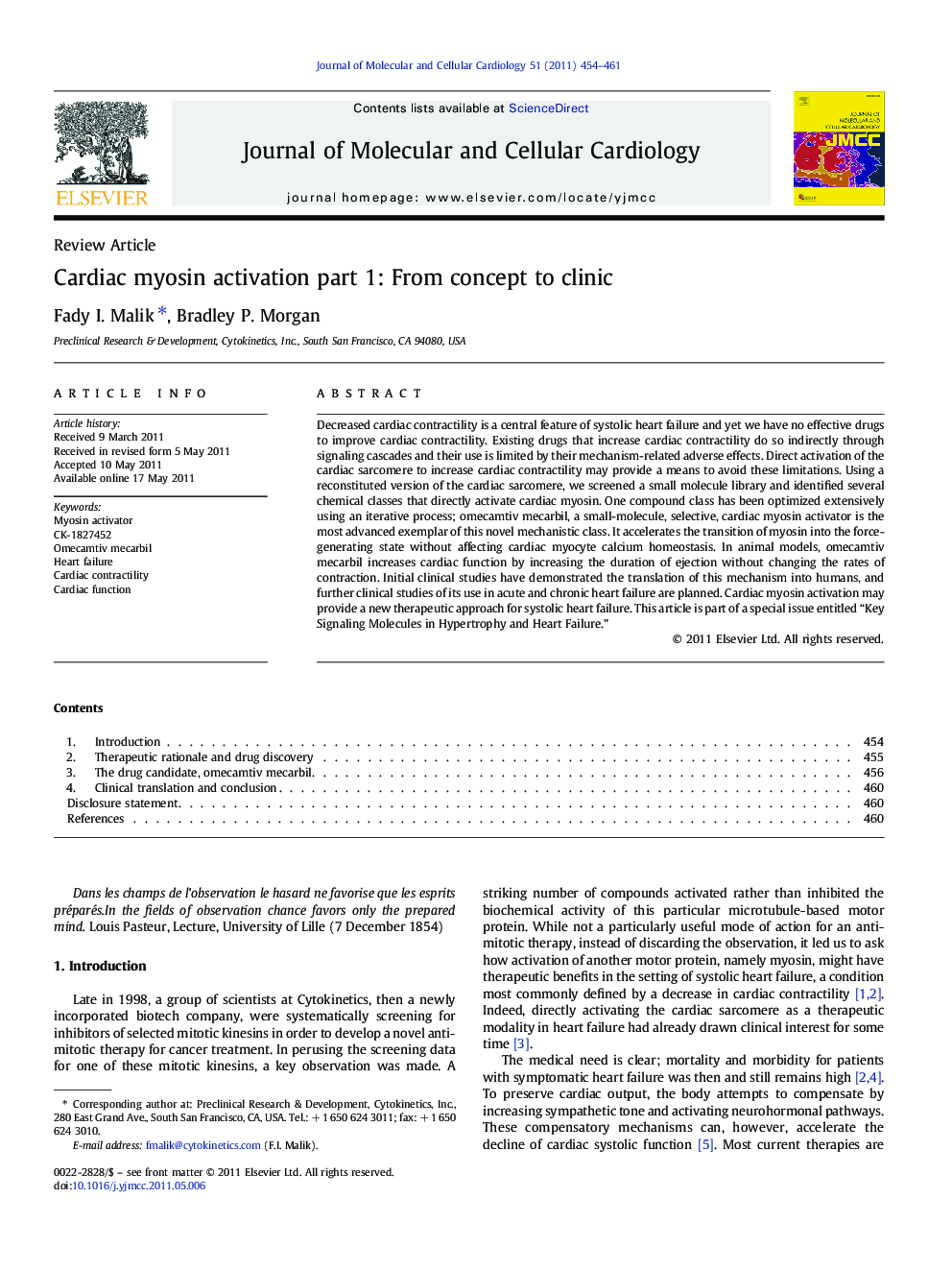| Article ID | Journal | Published Year | Pages | File Type |
|---|---|---|---|---|
| 2190814 | Journal of Molecular and Cellular Cardiology | 2011 | 8 Pages |
Decreased cardiac contractility is a central feature of systolic heart failure and yet we have no effective drugs to improve cardiac contractility. Existing drugs that increase cardiac contractility do so indirectly through signaling cascades and their use is limited by their mechanism-related adverse effects. Direct activation of the cardiac sarcomere to increase cardiac contractility may provide a means to avoid these limitations. Using a reconstituted version of the cardiac sarcomere, we screened a small molecule library and identified several chemical classes that directly activate cardiac myosin. One compound class has been optimized extensively using an iterative process; omecamtiv mecarbil, a small-molecule, selective, cardiac myosin activator is the most advanced exemplar of this novel mechanistic class. It accelerates the transition of myosin into the force-generating state without affecting cardiac myocyte calcium homeostasis. In animal models, omecamtiv mecarbil increases cardiac function by increasing the duration of ejection without changing the rates of contraction. Initial clinical studies have demonstrated the translation of this mechanism into humans, and further clinical studies of its use in acute and chronic heart failure are planned. Cardiac myosin activation may provide a new therapeutic approach for systolic heart failure. This article is part of a special issue entitled “Key Signaling Molecules in Hypertrophy and Heart Failure.”
► Decreased cardiac contractility is a central feature of systolic heart failure. ► Existing drugs that indirectly increase cardiac contractility are limited by mechanism-related adverse effects. ► Direct activation of the sarcomere might improve cardiac performance while avoiding the adverse effects of indirect mechanisms. ► Omecamtiv mecarbil, an allosteric activator of cardiac myosin, was developed to test this hypothesis.
